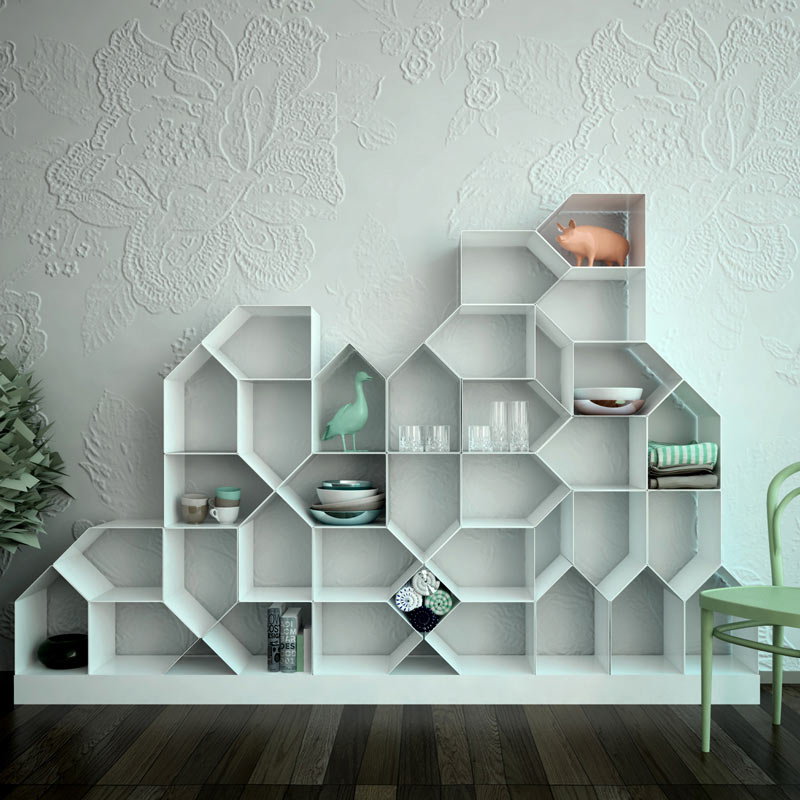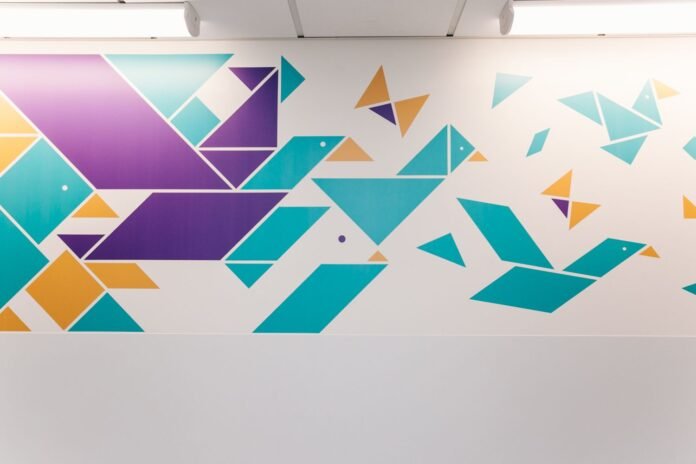Wall design is an important aspect of interior decoration that can transform any space into an eye-catching work of art. One popular trend in recent times is geometric wall design. Geometric wall design is a contemporary style that uses simple geometric shapes to create bold and visually stunning patterns on walls. It is a versatile design that can be adapted to suit any space, from living rooms to bedrooms, offices to commercial spaces.
In this comprehensive guide, we will explore everything you need to know about geometric wall design. We will cover the different types of geometric designs, the materials and tools required for installation, and tips for choosing the right design for your space. We will also provide step-by-step instructions on how to create your own geometric wall design.
Types of Geometric Wall Design

There are several types of geometric wall design, each with its own unique style and appeal. Some of the most popular types include:
-
Hexagon Wall Design
Hexagon wall design is a popular geometric wall design that uses hexagonal shapes to create a striking pattern on walls. It is a versatile design that can be used to create a variety of patterns, from a honeycomb-inspired look to a more complex interlocking pattern.
-
Diamond Wall Design
Diamond wall design is a modern geometric design that uses diamond shapes to create a visually stunning pattern on walls. It is a versatile design that can be adapted to suit any space, from a simple diamond pattern to a more complex interlocking diamond pattern.
-
Triangles Wall Design
Triangles wall design is a geometric design that uses triangular shapes to create a unique pattern on walls. It is a versatile design that can be adapted to suit any space, from a simple triangle pattern to a more complex interlocking triangle pattern.
-
Square Wall Design
Square wall design is a geometric design that uses square shapes to create a visually stunning pattern on walls. It is a versatile design that can be adapted to suit any space, from a simple square pattern to a more complex interlocking square pattern.
Materials and Tools Required for Geometric Wall Design

Before you begin your geometric wall design project, you will need to gather the necessary materials and tools. The materials and tools required will vary depending on the design you choose, but some common items include:
-
Paint
Paint is an essential material for geometric wall design. You will need to choose the colors you want to use for your design and purchase enough paint to cover the area you want to decorate.
-
Painter’s Tape
Painter’s tape is a crucial tool for creating clean, crisp lines when painting geometric designs on walls. It is used to create the outline of the shapes you want to paint, and it helps to prevent bleeding and smudging of the paint.
-
Measuring Tape
Measuring tape is an essential tool for accurately measuring the size and placement of the shapes in your design.
-
Pencil and Paper
A pencil and paper are useful for sketching out your design before you begin painting. This will help you visualize how the finished design will look and make any necessary adjustments before you start painting.
-
Level
A level is useful for ensuring that the shapes in your design are straight and level.
-
Paint Roller and Brushes
A paint roller and brushes are necessary for applying the paint to your walls. You will need to choose the appropriate size roller and brushes for your design.
Tips for Choosing the Right Geometric Wall Design for Your Space

Choosing the right geometric wall design for your space can be a daunting task. There are several factors to consider, including the size and shape of the room, the color scheme, and the overall style of the space. Here are some tips to help you choose the right design for your space:
-
Consider the Size and Shape of the Room
The size and shape of the room will play a significant role in determining the type of geometric wall design that will work best. For smaller rooms, a simple pattern with fewer shapes and colors may be more suitable, as it will help to create the illusion of space. Larger rooms can handle more complex patterns with multiple shapes and colors, which will help to add interest and depth to the space.
-
Color Scheme
The color scheme of your space will also influence the type of geometric wall design that will work best. If your space has a neutral color scheme, a geometric wall design with bold and bright colors can add a pop of color and create a focal point. On the other hand, if your space already has a lot of colors, a simpler geometric design in a monochromatic color scheme may work best.
-
Style of the Space
The overall style of your space should also be considered when choosing a geometric wall design. A modern space may benefit from a more complex geometric design, while a traditional space may be better suited to a simpler geometric design.
Step-by-Step Instructions for Creating a Geometric Wall Design

Once you have chosen the geometric wall design that works best for your space, it is time to get started. Here are step-by-step instructions on how to create your own geometric wall design:
-
Plan Your Design
Before you begin painting, it is important to plan your design. Use a pencil and paper to sketch out the shapes and colors you want to use in your design. You can also use painter’s tape to create a mockup of your design on the wall.
-
Measure and Mark
Once you have your design planned out, use a measuring tape to mark the placement and size of the shapes on the wall. Use a level to ensure that the shapes are straight and level.
-
Apply Painter’s Tape
Apply painter’s tape to the wall, following the marks you made in step 2. The tape should create the outline of the shapes you want to paint.
-
Paint
Once the tape is in place, use a paint roller or brushes to apply the paint to the areas between the tape. Be sure to use a light touch to avoid bleeding or smudging of the paint.
-
Remove Tape
Once the paint has dried, carefully remove the painter’s tape to reveal your finished geometric wall design.
Conclusion
Geometric wall design is a modern and versatile trend that can transform any space into a work of art. Whether you choose a hexagon, diamond, triangle, or square pattern, there are endless possibilities when it comes to geometric wall design. With the right materials, tools, and planning, you can create a stunning geometric wall design that will add style and interest to your space.
Google News | Telegram
















